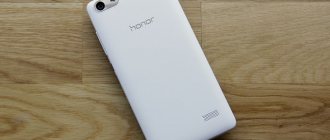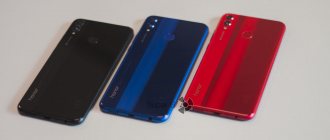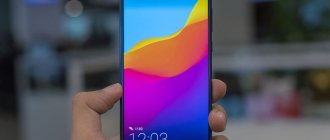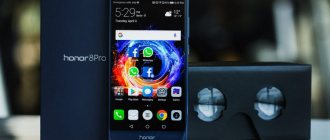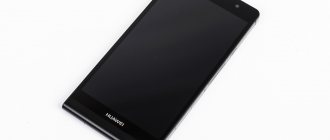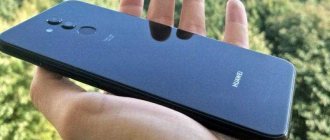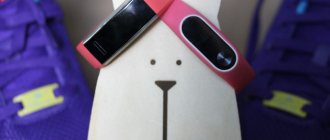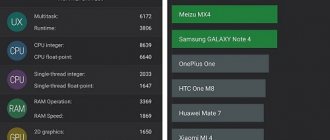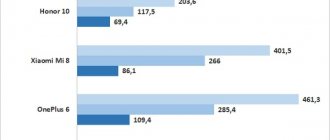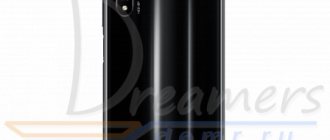Despite all the difficulties associated with American sanctions, Huawei and its subsidiary Honor do not despair and continue to attack the world of smartphones with interesting solutions. Yes, Google Play will be unavailable, as well as some of the applications most closely related to Google, but sometimes the offer in terms of the totality of qualities may be such that such nuances will already seem insignificant.
Honor 30i just claims to be such an offer. The smartphone for 18 thousand rubles (17,990 rubles to be exact) offers an AMOLED display, an under-screen fingerprint scanner, a glass body and a triple camera with a main Quad Bayer sensor. At the very least, the Honor 30i stands out noticeably against the general background—let’s take a closer look.
⇡#Technical characteristics
| Honor 30i | Xiaomi Redmi Note 9 Pro | Nokia 5.3 | realme 6 Pro | Honor 9X | |
| Display | 6.3 inches, AMOLED, 2400 × 1080 pixels, 418 ppi; capacitive, multi-touch | 6.67 inches, IPS, 2400 × 1080 pixels, 395 ppi; capacitive, multi-touch | 6.55 inches, IPS, 1600 × 720 pixels, 268 ppi; capacitive, multi-touch | 6.6 inches, IPS, 1080 × 2400, 399 ppi; capacitive multi-touch | 6.59 inches, IPS, 2340 × 1080 pixels, 391 ppi, capacitive multi-touch |
| Protective glass | No data | Corning Gorilla Glass 5 | Corning Gorilla Glass 3 | Corning Gorilla Glass 5 | No data |
| CPU | HiSilicon Kirin 710F: eight cores (4 × Cortex-A73, 2.2 GHz + 4 × Cortex-A53, 1.7 GHz) | Qualcomm Snapdragon 720G: eight cores (2 × Kryo 465 Gold, 2.3 GHz and 6 × Kryo 465 Silver, 1.8 GHz) | Qualcomm Snapdragon 665: four Kryo 260 Gold cores, 2.0 GHz + four Kryo 260 Silver cores, 1.8 GHz | Qualcomm Snapdragon 720G: eight cores (2 × Kryo 465 Gold, 2.3 GHz and 6 × Kryo 465 Silver, 1.8 GHz) | HiSilicon Kirin 710F: eight cores (4 × Cortex-A73, 2.2 GHz + 4 × Cortex-A53, 1.7 GHz) |
| Graphics controller | Mali-G51 MP4 | Adreno 618 | Adreno 610 | Adreno 618 | Mali-G51 MP4 |
| RAM | 4 GB | 6 GB | 3/4/6 GB | 8 GB | 4 GB |
| Flash memory | 128 GB | 64/128 GB | 64 GB | 128 GB | 128 GB |
| Connectors | USB Type-C, 3.5 mm mini-jack | USB Type-C, 3.5 mm mini-jack | USB Type-C, 3.5 mm mini-jack | USB Type-C, 3.5 mm mini-jack | USB Type-C, 3.5 mm mini-jack |
| Memory card slot | Yes (hybrid slot for nM/second nano-SIM) | Yes (separate slot for microSD) | Yes (separate slot for microSD) | Yes (separate slot for microSD) | Yes (hybrid slot for nM/second nano-SIM) |
| SIM cards | 2 × nano-SIM | 2 × nano-SIM | 2 × nano-SIM | 2 × nanoSIM | 2 × nano-SIM |
| Cellular connection 2G | GSM/GPRS/EDGE 900/1800/1900 MHz CDMA 800 & TD-SCDMA | GSM/GPRS/EDGE 850/900/1800/1900 MHz | GSM/GPRS/EDGE 850/900/1800/1900 MHz | GSM/GPRS/EDGE 850/900/1800/1900 MHz | GSM 850/900/1800/1900 MHz |
| Cellular 3G | HSDPA 850/900/1900/2100 | HSDPA 850/900/1700/1900/2100 | HSDPA 850/900/1900/2100 | HSDPA 850/900/1700/1900/2100 MHz | HSDPA 850/900/1900/2100 MHz |
| Cellular 4G | LTE, bands 1, 2, 3, 4, 5, 7, 8, 19, 20, 26, 28, 34, 38, 39, 40, 41 | LTE, bands 1, 3, 4, 5, 7, 8, 20, 28, 38, 40, 41 | LTE Cat.4 (up to 150/50 Mbit/s), bands 1, 3, 5, 7, 8, 20, 28, 38, 40, 41 | LTE Cat. 6 (300/150 Mbit/s), bands 1, 2, 3, 4, 5, 7, 8, 20, 28, 38, 40, 41 | LTE Cat. 12 (600 Mbit/s), bands 1, 3, 7, 8, 20 |
| WiFi | 802.11a/b/g/n/ac; 2.4/5 GHz | 802.11a/b/g/n/ac; 2.4/5 GHz | 802.11 b/g/n/ac; 2.4/5 GHz | 802.11a/b/g/n/ac; 2.4/5 GHz | 802.11a/b/g/n/ac; 2.4/5 GHz |
| Bluetooth | 5.1 | 5.0 | 4.2 | 5.1 | 5.0 |
| NFC | Eat | Eat | Eat | Eat | No |
| Navigation | GPS, A-GPS, GLONASS, BeiDou | GPS, A-GPS, GLONASS, BeiDou, Galileo | GPS, A-GPS, GLONASS, BeiDou | GPS, A-GPS, GLONASS, BeiDou, NavIC | GPS, A-GPS, GLONASS, BeiDou |
| Sensors | Illumination, proximity, accelerometer/gyroscope, magnetometer (digital compass) | Illumination, proximity, accelerometer/gyroscope, magnetometer (digital compass) | Illuminance, proximity, accelerometer/gyroscope | Illumination, proximity, accelerometer/gyroscope, magnetometer (digital compass) | Illumination, proximity, accelerometer/gyroscope, magnetometer (digital compass) |
| Fingerprint's scanner | Yes (on screen) | Yes (on the side key) | Yes (rear) | Yes (on the side key) | Yes (rear) |
| Main camera | Triple module, 48 + 8 + 2 MP, ƒ/1.8 + ƒ/2.4 + ƒ/2.4, phase detection autofocus in the main module, single LED flash | Quadruple module: 64 + 8 + 5 + 2 MP, ƒ/1.9 + ƒ/2.2 + ƒ/2.4 + ƒ/2.4, phase detection autofocus, single LED flash | Quadruple module: 13 MP, ƒ/1.8 + 5 MP (wide-angle) + 2 MP (macro) + 2 MP (depth sensor), phase detection autofocus with main camera, single LED flash | Quadruple module, 64 + 12 + 8 + 2 MP, ƒ/1.8 + ƒ/2.5 + ƒ/2.3 + ƒ/2.4, phase detection autofocus in the main and telephoto modules, LED flash | Triple module: 48 + 8 + 2 MP, ƒ/1.8 + ƒ/2.4 + ƒ/2.4, phase detection autofocus, LED flash |
| Front-camera | 16 MP, ƒ/2.0, without autofocus, with flash | 16 MP, ƒ/2.5, without autofocus, with flash | 8 MP, ƒ/2.0, no autofocus, no flash | 16 + 8 MP, ƒ/2.1 + ƒ/2.2, no autofocus, no flash | Retractable, 16 MP, ƒ/2.2, no autofocus, no flash |
| Nutrition | Non-removable battery: 15.2 Wh (4000 mAh, 3.8 V) | Non-removable battery: 19.08 Wh (5020 mAh, 3.8 V) | Non-removable battery: 15.2 Wh (4000 mAh, 3.8 V) | Non-removable battery: 16.34 Wh (4300 mAh, 3.8 V) | Non-removable battery: 15.2 Wh (4000 mAh, 3.8 V) |
| Size | 157.2 × 73.2 × 7.7 mm | 165.8 × 76.7 × 8.8 mm | 164.3 × 76.6 × 8.5 mm | 163.8 × 75.8 × 8.9 mm | 163.1 × 77.2 × 8.8 mm |
| Weight | 172 g | 209 g | 185 g | 202 g | 206 g |
| Water and dust protection | No | Splash protection | No | Splash protection | No |
| operating system | Android 10, Magic UI 3.1 shell (without Google services) | Android 10, MIUI 11 shell | Android 10 | Android 9.0 Pie, realme UI shell | Android 9.0 Pie, Magic UI shell |
| Current price | 17,990 rubles | 17,700 rubles for the 6/64 GB version, 20,490 rubles for the 6/128 GB version | 13,490 rubles for the 3/64 GB version, 14,990 rubles | 21,950 rubles | 15,150 rubles |
| Information on technical characteristics and subsystems of Honor 30 Pro+ | ||||
ASUS Zenfone Max (M2) - capacitive battery, increased RAM
Experts liked this technological gadget from a renowned manufacturer. It has an 8-core Qualcomm Snapdragon 632 processor - 1.8 GHz each core, 14 nm process technology. The gadget is fast, powerful with a 4,000 mAh battery.
If 64 GB of internal memory is not enough, you can use a slot for a memory card with a capacity of 2048 GB. Users who tried it categorized the device as “for selfies and games.”
Pros of Asus:
- design at its best;
- there is no glare or overflow on the display;
- sensitive Touch ID;
- fast, powerful;
- high sound quality;
- no unnecessary applications.
Experts note the ergonomics of the device. It is comfortable to hold in your hand and does not slip out. Looks stylish.
Disadvantages of the Zenfone Max (M2) smartphone:
- You can’t see the details of the pictures, they are pixelated (loose);
- photo quality is low;
- lack of NFC;
- no gesture controls;
- No headset or film included.
Some users consider the M2 model worse than the M1 due to the addition of unnecessary user options and the elimination of NFC.
⇡#Design, ergonomics and software
If in terms of characteristics the Honor 30i can really surprise, then it does not strive to do so with its design, adhering to the usual Honor values.
The front panel received a “stretched” display (20:9 format) with minimal frames. The issue with the front camera, which needs to be placed somewhere in these conditions, was resolved in the most traditional way - it was placed in a teardrop cutout in the center of the top edge, under the earpiece.
Honor 30i, front panel: at the top there is a front camera in the cutout and an earpiece
The screen is not curved, but the rounded edges create the illusion. And holding it, despite the usual large display, is comfortable. Honor 30i is a thin smartphone: 7.7 mm, which is very rare for today's realities. Please note in the specifications table that none of the competing smartphones are thinner than eight and a half millimeters. Moreover, the rear block of cameras protrudes slightly above the body.
Honor 30i, rear panel: in the upper corner there is a triple camera unit and a single LED flash
The rear panel stands out a little more, but is also quite standard - at least for Honor brand smartphones. It is made of glossy glass, shimmering in different shades depending on the lighting and viewing angle, and the camera block is a thin rectangle with rounded ends - and is located in the corner. The edges are made of plastic in the same color as the back panel.
Honor 30i, left side: slot for SIM cards and memory cards
Honor 30i, right side: power/lock and volume keys
Honor 30i is available in three colors: Shimmering Turquoise, Ultra Violet Sunset and Midnight Black. At least in a turquoise, as in our case, and an “ultraviolet” case, the gadget looks bright and interesting. For lovers of the classics, who, as always, are the majority, there is a black version - also glossy, however. In any case, the smartphone is very slippery, so it makes sense to immediately hide it in a case, since it is included in the package. Made of transparent silicone, it will, of course, make the case visually thicker, but will not hide the color.
Honor 30i, top edge: mini-jack and microphone
Honor 30i, bottom edge: microphone, USB Type-C port, main speaker
All functional elements are in place: two hardware keys on the right side, a mini-jack on the top and a USB Type-C port on the bottom - microUSB is finally being pushed out into the “up to 10 thousand rubles” price segment. There is no dust or moisture protection.
The fingerprint scanner is located under the screen - an optical sensor is used, which does not allow you to unlock the device with a wet or greasy finger, but in general it works quite at the level of flagship smartphones, like the Honor 30 Pro+. It still doesn’t match the accuracy and response speed of a capacitive sensor, but it’s really good in its category. If desired, you can duplicate the scanner with a face recognition system that uses the front camera without any additional sensors. This system is much less reliable than a fingerprint scanner, but it works instantly.
Screenshot gallery
View all images (18)Honor 30i runs Android 10 with the proprietary Magic UI 3.1 shell (a variation on EMUI 10 with some additional applications for Honor). Of course, there are no Google services. The manufacturer proposes to cope with this problem both with the help of the really quickly growing AppGallery branded store (in it, for example, Mail and Yandex services are fully represented), and with the help of the pre-installed Petal Search service, available on the main screen - in it you can search for any application on the Internet and download it right there. Applications are searched both on the official websites of the authors and in apk file directories like APK Pure. To be honest, it doesn’t always work - I ended up downloading the APK Pure app to download directly from there. Not all applications will work on the smartphone either - Huawei/Honor are trying to correct the situation by regularly updating the catalog, including the AppGallery, but you won’t be able to play any game from Google Play, even after downloading and installing it through third-party services. But the problem with contactless payment has been solved - the inaccessible Google Pay has been completely replaced by the Wallet and SberPay applications (there is also Huawei Pay, but it so far only works with a couple of banks and UnionPay cards); Of course, there is NFC in the smartphone.
Apple iPhone 11 - ultra-wide-angle camera and nothing more
The smartphone is not attractively priced. But those who purchased the device leave laudatory reviews about it. Pros of the phone:
- high quality photographs;
- no problems with updating, no slowdowns;
- multitasking, FaceID;
- speed of work, productivity;
- design and dimensions are thought out to the smallest detail;
- useful options for photography enthusiasts: night mode, portrait mode, etc.
The disadvantages of the iPhone 11 include the cost.
Choosing a smartphone is not an easy task. If safety is important, the cheapest option won't do. Proven, working Touch ID is now available on devices. Samsung has an excellent screen, but problematic software and fingerprint scanner.
If you need a durable, reliable phone, choose HUAWEI or Xiaomi. But these are tips from other users. To buy your ideal gadget, they start from the purpose of its purchase, understand the budget and personal requirements for the device.
⇡#Display and sound
One of the key advantages of the Honor 30i over the vast majority of competitors (with the exception of the Samsung Galaxy A50/A51) is the screen. There is an AMOLED matrix with a diagonal of 6.3 inches and a resolution of 2400 × 1080 pixels. The pixel density is normal – 418 ppi.
The very fact of using an OLED screen in a smartphone in this price range can, in theory, be a double-edged sword, but the Honor 30i has a very decent matrix. If the term PenTile is not worth taking out of the dusty closet of consciousness in any case, then concerns about high PWM might not be groundless - it is present here. But if you are sensitive to this (for example, I am not), you can activate a special parameter in the settings, and the PWM will go away. This does not noticeably affect the picture. But there are still no modes for increased screen refresh rates - and this is logical for a device costing less than 20 thousand rubles.
The very list of smartphones presented in the graph above signals the special status of the Honor 30i. Compared to the background of two to three times more expensive devices, the Honor 30i screen looks great. The measured maximum brightness level without software enhancement during auto-adjustment is 475 cd/m2 - a good level for an OLED display; not all inexpensive LCDs are capable of this. You can use your smartphone in the sun without any problems.
The screen settings are well known from devices running Magic UI 3.1 - there is an Always-On Display mode (in this case not configurable, you can only turn it on or off), and a dark theme, you can adjust the font size, resolution, and activate the already mentioned reduction mode flicker and UV filtering (adjustable). Color reproduction can be adjusted by choosing from two presets (“vivid” and “normal”), with color temperature adjustable to suit your taste. I measured color rendering with the "Vivid" and "Normal" presets at the default color temperature.
Honor 30i, bright mode, gamma. Yellow line – Honor 30i performance, dotted line – reference range
Honor 30i, bright mode, color temperature. Blue line – Honor 30i performance, dotted line – reference temperature
Honor 30i, bright mode, color gamut. Gray triangle – DCI-P3 coverage, white triangle – Honor 30i coverage
In Vivid mode, the color gamut is approximately the same as the DCI-P3 standard, but slightly shifted. Gamma, in fact, is the standard - 2.25 with stable curves. The color temperature is increased - the curve smoothly rises from 7,000 to 7,500 K. The average deviation DeltaE for the expanded Color Checker palette (shades of gray + a wide range of color shades) is 4.71 with a norm of 3.00.
Honor 30i, normal mode, gamma. Yellow line – Honor 30i performance, dotted line – reference range
Honor 30i, normal mode, color temperature. Blue line – Honor 30i performance, dotted line – reference temperature
Honor 30i, normal mode, color gamut. Gray triangle – sRGB coverage, white triangle – Honor 30i coverage
In the “normal” color rendering mode, the color gamut corresponds to the sRGB standard, the average gamut is approximately the same (2.27), the color temperature practically does not exceed the standard - it remains at 6,600 K. And the average deviation DeltaE on the Color Checker scale is already almost normal - 3.04. The Honor 30i display not only has a high-quality matrix, but is also well configured.
Honor 30i has both a mini-jack and Bluetooth version 5.1 - but the aptX profile is not supported. So, despite the possibility of a free wired connection, the sound capabilities of the device must be considered somewhat limited. The not-so-best mono speaker also contributes to this.
Honor 30 Pro+ operating time
- Battery capacity: 4000 mAh
- Fast charging: 40W supported
- Wireless charging technology: supported, 27W
- Reverse charging: supported, 7.5 W
- Charger included: 40 W
Using the fast charging unit included in the kit, the device can be charged to 75% from scratch in half an hour , and the phone will be fully charged in just over an hour. If you wish, you can additionally purchase wireless charging, which, of course, will not produce such rapid results, but it is more convenient to use.
A smartphone can share energy with other gadgets. Moreover, this could be not only another phone, but also a watch or wireless headphones. To use this feature, the second device must support wireless charging technology and both devices must be turned on.
The Honor 30 Pro+ has a small battery by today’s standards – 4000 mAh. It's enough for a day of use, but nothing more. Running applications left in the background significantly reduce battery charge.
⇡#Hardware and performance
If the screen is definitely the strongest point of the Honor 30i, then the hardware platform should be classified as relatively weak. It uses last year's HiSilicon Kirin 710F - a 12-nanometer system-on-chip with four 2.2-GHz ARM Cortex-A73 cores and four ARM Cortex-A53 clocked at 1.7 GHz. Graphics subsystem - ARM Mali-G51 MP4.
The same hardware platform was installed in last year’s smartphones of this class like Honor 9X – and even then it did not allow them to be considered the fastest in this category. However, there was no serious leap in performance in the middle class this year, and in general the lag (where it exists) of the Honor 30i is not critical. This smartphone, of course, cannot be classified as a gaming gadget; its capabilities in this regard are strictly limited, but it copes with its main responsibilities confidently.
The operating system runs smoothly, applications open even faster than you would expect from such a phone, and processes run reliably. During the week of testing, the smartphone never froze.
The already not very serious gaming potential of the Honor 30i is affected by difficulties with throttling - when setting the performance mode in the CPU Throttling Test, the peak clock frequency dropped to 68% of the maximum, and this drop occurred linearly. The average performance level was 129 GIPS. The company, however, claims that the problem is related to the non-final copy that came to us for testing, and Honor specialists managed to achieve different results.
Honor 30i is offered in a single version of built-in memory: 4 GB of LPDDR4X RAM and - amazing generosity - 128 GB of UFS 2.1 flash memory. Moreover, the volume can be expanded using a proprietary NM card (capacity up to 256 GB); it is installed instead of a second SIM card.
Samsung Galaxy A50 - premium design and performance
And the 50 Samsung with a fingerprint surprises with its screen size (6.4 inches) and 3D rear panel. The phone is made of fiberglass with rounded corners. The body is reduced, thinned to the limit. But experts say it's not just the screen, which has FHD+ resolution (sAMOLED color characteristics).
The gadget is equipped with a wide-angle camera with a view of 1230 and a 25 megapixel camera with f/1.7 aperture. The photographs are distinguished by their clarity, sharpness, detail, and natural reproduction of colors and shades.
Pros of a smartphone:
- nothing extra;
- nimble, powerful;
- extreme design;
- slot for an additional 512 GB card;
- NFC, GPS, good network signal;
- Taking photos is a pleasure.
When actively using the device, the battery lasts for a day. This is also considered by consumers to be an advantage of the model.
Flaws:
- The screen size is not for small hands, it is inconvenient;
- fragile case material, scratches, fades;
- eyes get very tired after working with the phone for 2-3 hours;
- cameras overpraise;
- Bad Touch ID, scans every other time.
A50 users warn about the need to use the smartphone carefully because it slips out of their hands. The case breaks easily.
⇡#Communications and wireless communications
The smartphone works with LTE from both SIM cards. The speed at which the modem can operate is not specified; all bands necessary for the correct operation of networks are available.
Slot for two nano-SIM cards or one nano-SIM and an NM card
The wireless modules are in order: dual-band Wi-Fi (802.11a/b/g/n/ac), the already mentioned Bluetooth 5.1, NFC, navigation module with GPS (A-GPS), GLONASS and BeiDou.
Entering a fingerprint into the Honor 10 memory
Adding a fingerprint to your device is not difficult. The sequence of actions is as follows:
- Go to “Settings”.
- Open "Security and Privacy".
- Click on “Fingerprint”.
- Come up with a 6-digit PIN code that you need to remember (the system will ask you to enter it after each reboot of the smartphone).
- After this, the user is warned:
6. Fingerprint registration. To do this, you need to press the scanner with your thumb, release it when it vibrates, and press it again.
Considering that the sensor does not always work, this procedure will take about 2 minutes. In total, you can register up to 5 prints.
After registration, you can start installing a fingerprint on Honor 10.
⇡#Camera
Honor smartphones have always been famous for having some of the best cameras compared to competitors, and Honor 30i with its triple module tries to keep up.
The main camera has a 48-megapixel Quad Bayer sensor (physical dimensions - 1/2.0 inch) with an ƒ/1.8 aperture lens, phase detection autofocus and an equivalent focal length of 28 mm. Despite the presence of 64-megapixel and 108-megapixel solutions on the market, this module remains more than relevant and competitive - as practice confirms.
| On the left are pictures taken with the main camera, on the right – with the wide-angle camera | ||
You can quite confidently shoot with the main camera not only in good light, when almost any modern smartphone can produce a high-quality picture, but also in low light (it’s more difficult at night). I note both good color rendition and well-set white balance. Sharpness is balanced, saturation is within normal limits. The second camera is responsible for an expanded viewing angle - it is an 8-megapixel module with an ƒ/2.4 aperture lens, giving a coverage angle of 120 degrees. In good light, it also gives a decent picture - with geometric distortions (correction is not provided), but quite sharp for most of the frame. The only thing I have to complain about is that the white balance is poor, especially in comparison with the main module; the image turns out to be too cold.
| On the left is a photo in standard mode, on the right is in night mode | ||
In the dark, it is no longer possible to get a detailed picture with a wide-angle camera - the noise reduction system more or less copes with grain, but at the cost of details; dynamic range also drops. The proprietary night mode, which combines several images into one with increased clarity and expanded dynamic range, is available only for a standard viewing angle - it works well, but it overdoes the contour sharpness.
| On the left are pictures in standard resolution (12 megapixels), on the right - in maximum resolution (48 megapixels) | ||
The Honor 30i camera can shoot with both a 12 megapixel resolution (offered by default) and a 48 megapixel resolution - to do this, you need to go to the “professional” mode and select the appropriate option. What’s surprising is the absence of a “hybrid” 2x zoom, which is common for all smartphones with a Quad Bayer sensor (a 48-megapixel crop with slight loss of quality).
| On the left are pictures without “artificial intelligence”, on the right – with AI | ||
Yes - using machine learning technologies, the smartphone recognizes many scenes and adapts the picture taking into account this knowledge. As a rule, the same operations are performed - contrast and saturation are raised.
The third camera, as you might guess, is a depth sensor used in portrait mode. It works a little strangely here - there is only one focal length available, which encourages shooting full-length portraits, but in this case, the separation of plans is unstable, and there may be errors with the creation of “artificial bokeh”. With half-length and close-ups, there are no such problems, especially since numerous bokeh effects are available (from circles to hearts), a switchable and customizable beautifier. But the focal length is poorly suited for close-up portraits - noticeable geometric distortions interfere.
The camera application is standard for smartphones with MagicUI: horizontal navigation, a set of familiar settings. A “professional” mode with manual settings is available, but without the ability to shoot in RAW.
| On the left is a picture without forced HDR enabled, on the right is with HDR | ||
There is HDR (you need to turn it on forcibly; in the basic format it is disabled, but when you activate the AI assistant, the smartphone will in any case stitch together pictures from several frames with extended dynamic range), panorama stitching, “live photos” (when a small piece is recorded along with the photograph video.
Gallery of pictures
View all images (22)In video shooting, the Honor 30i's capabilities are limited to Full HD resolution with a frequency of only up to 30 frames per second. There is digital stabilization, it is not too brilliant.
The front camera has a 16-megapixel sensor and ƒ/2.0 aperture optics. There is no autofocus or flash, the module is quite ordinary - the shooting quality is normal, even in artificial lighting it is possible to get a good selfie, there is a portrait mode and a beautifier, just like on the main camera. But the focal length is again not optimal, geometric distortions are noticeable.
Owner recognition in Honor 30 Pro+
- Fingerprint scanner: yes
- Face recognition: yes
- Via Bluetooth device: yes
The Honor 30 Pro+ has a fingerprint scanner integrated into the display and located at the bottom of the screen . There are three types of animation for the appearance of the scanner. Up to five fingerprints can be stored in memory, assigning names to them for identification. To later figure out what kind of fingerprints you entered, there is a special section in the settings menu with a recognition zone, where the phone will tell you the name of the fingerprint being identified.
Unlocking the phone with your face is implemented flawlessly; it works literally in one second . In conditions of minimal illumination and in the dark, the screen backlight turns on to recognize the owner. When you enable the “Activate by lifting the device” option, unlocking becomes even faster. At an angle, recognition works just as quickly.
Using biometrics, you can protect not only your smartphone, but also access to individual files and applications.
The fingerprint scanner is traditionally a weak point for Huawei . As with other smartphones from the manufacturer, it does not always work perfectly; sometimes the phone does not recognize the owner.
⇡#Autonomous work
Honor 30i received a battery with a capacity of 15.2 Wh (4000 mAh, 3.8 V), and it is enough for the smartphone to work fully without recharging for a whole day, or even more. In fact, I had to charge it on average once every one and a half to two days, but I also used the gadget quite moderately. In any case, the combination of an OLED display and a not too powerful (and, therefore, power-hungry) platform looks advantageous.
In our traditional test with Full HD video playback at maximum brightness, with Wi-Fi turned on and notifications turned on, the Honor 30i showed a remarkable result - exactly 14 hours. Expected considering the OLED screen, but still cool.
The current USB Type-C port is used for charging, but fast charging is not provided. Using the included 10 W charger, the smartphone charges in more than two hours.
Samsung Galaxy Note 9 – powerful processor, wireless smartphone charging
Galaxy Note 9 are smartphones with a fingerprint, which users consider competitors of Apple gadgets. They are not inferior to the latter in price and characteristics.
Experts noted the 4,000 mAh battery, 8 GB of RAM, 10 nm processor, stereo speakers from AKG and 3-dimensional sound (Dolby Atmos technology was introduced).
Advantages of Galaxy Note 9:
- sensitive stylus;
- display with excellent color rendering;
- cameras produce clear, rich images;
- charging in 1.35 hours;
- protection from moisture.
Users liked the fast loading of objects. It was possible to increase the speed through the introduction of LTE technology, Wi-Fi, MIMO antenna (4x4).
Disadvantages of Galaxy Note 9:
- 6.4-inch display, inconvenient;
- The finger scan sensor is located on the back cover inconveniently;
- price;
- problems with updating;
- You cannot work continuously with the stylus (after 15-20 minutes they put it on the “base”).
Experts did not find it.
Samsung Galaxy Note 9 review ►
Results and conclusions
Fingerprint unlocking is quite convenient, although it has its drawbacks. If desired and necessary, you can set up face unlock, but when comparing these 2 methods, it is preferable to use a fingerprint.
Firstly, face unlocking is easy to deceive, for example, by slipping a photo of a person. Secondly, only the front camera will be used.
The best option would be to use both the face and the finger, but for different purposes. For example, you can unlock your smartphone with your face, open access to the Personal section with your fingerprint, or make payments via Google Pay. Share link:
Partner news and advertising
